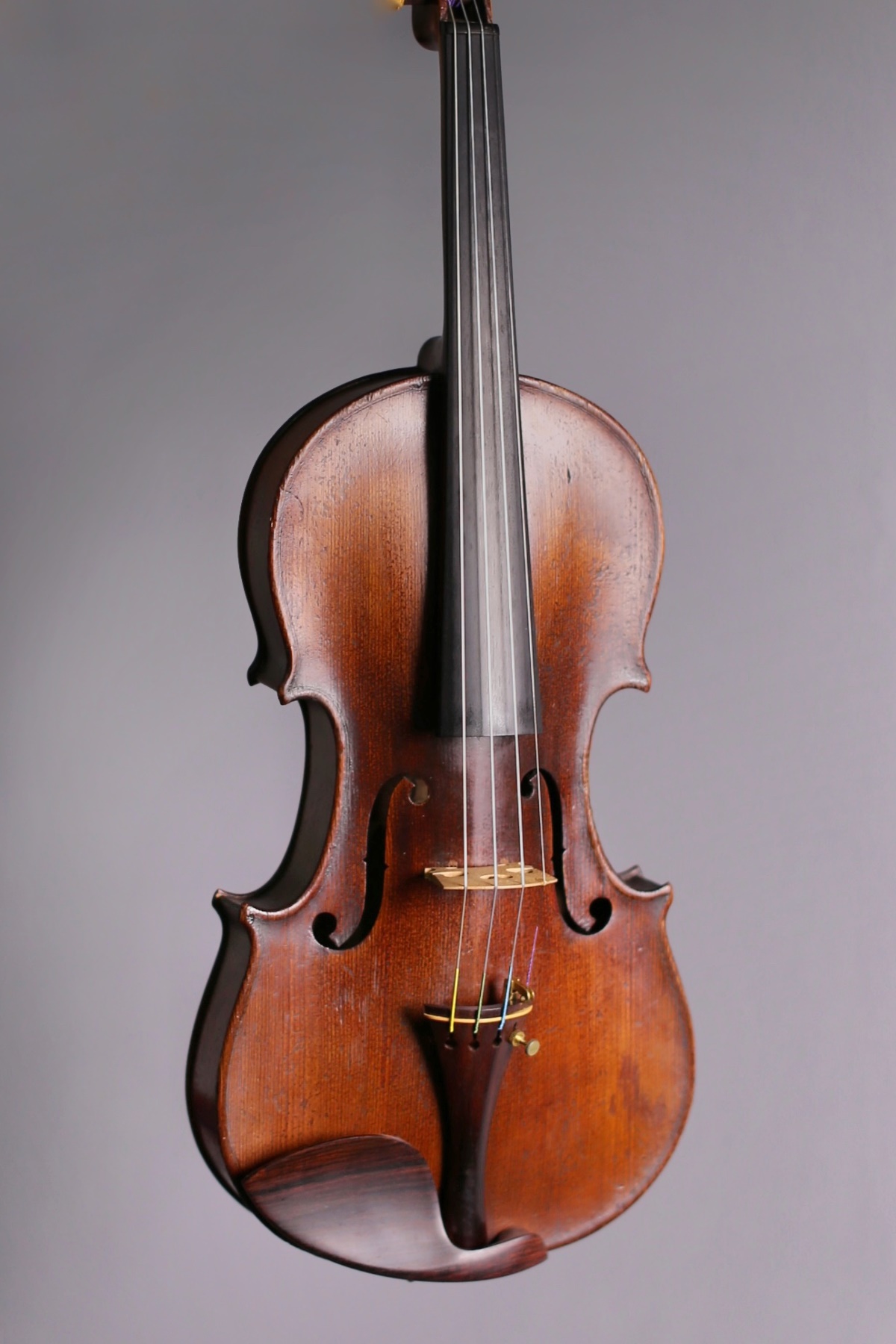Learning to play electric violin shares many similarities with studying acoustic violin, with a few important differences. The first is that almost every acoustic violin is shaped and tuned the same way. Electric violins, however, can come in many shapes and varieties, including 4-string, 5-string, 7-string, fretted, and some with the upper bout removed entirely to allow easier playing in the higher positions. And, in fact, your acoustic violin can be “converted” into an electric by attaching either a microphone or a piezo pickup to the body. Most other electric violins use a solid body, just like most electric guitars (such as the ubiquitous fender stratocaster). What follows is a review of electric violins and a discussion of some of the additional equipment you will likely require.
While there are many electric german violin on the market by large volume manufacturers, most of these just don’t sound very good. Some of the better (and mostly handmade) electric violins are reviewed below. I made my selection from instruments that I have either played or owned.
In general, I am not a fan of mass produced instruments. But Yamaha makes some of the best. Part of the Yamaha silent series, the model SV-200 features a dual piezo pickup. This is supposed to improve the sensitivity of the instrument to the subtleties of your playing, especially dynamic (volume) range. Coming in at around $1000, this instrument is cheaper than the others I will review below. On playing the instrument, I thought it was indeed responsive, certainly more so than previous Yamaha instruments. The on-board pre-amp allows for some sound manipulation on the instrument itself rather than in a separate, detached unit. The down-side of this is that it increases the weight of the violin.
Another popular model is made by NS Designs. This company uses a proprietary piezo pickup that is designed to be very clean and sound more like an acoustic violin in its unprocessed state. I sampled a a 5-string model, and I thought that the neck was overly thick and the instrument rather heavy. Still, if you are looking for a clean sound, this might be a good choice.
Zeta has earned itself a lot of hype in part because Boyd Tinseley, of Dave Matthews Band, uses a Zeta instrument called (what else) the “Boyd Tinsley.” Zeta also uses a proprietary piezo pick-up that has a very characteristic sound. If you have ever heard Santana play guitar, then you probably recognize his distinctive sound that comes from the combination of his Paul Reed Smith guitar coupled with a Mesa Boogie amp. Most of the sound coming out of that amp, no matter how the sound is EQ’d sounds “Boogified” to me. Similarly, I felt playing on this instrument that my sound would get “Zeta’d” by the pick-up. And you either like this sound or you don’t. A big downside to this zeta model is that it is quite heavy.
Mark Wood, Another “boutique” maker of electric violins, recognized that trying to hold a 7-string fretted violin under the neck is quite difficult, due to the weight. Thus, he designed and patented a “flying v-shape” with a strap that fits around your torso and holds the violin up in a playing position. Though it can take some time to get used to, this design really does support the weight of the fiddle well. Make no mistake — adding frets to the violin is a big adjustment for the classical player. In fact, if you have ever played a mandolin, you probably realize how much the frets can change things. Sliding and vibrato techniques are very difficult on a fretted instrument. In my opinion, the frets are best for allowing guitar players and others familiar with fretted instruments to circumvent the usual requirement of pinpoint accuracy with finger placement which is necessary for playing in tune on the an acoustic violin. The 7-string fretted model, which is the flagship instrument in his line of electric violins, is priced at $3500. Mark Wood does not use proprietary piezo pickups. Rather, he uses either Barbera or Schatten pickups, which are mass produced piezo pickeps that are used in many different electric violins.
A former Zeta employee, John Jordan makes custom electric violins in almost every combination of material, strings and frets that you can imagine. Jordan started his own design studio when he became disillusioned by Zeta’s increasingly commercial attitude. Jordan handcrafts each instrument using his patented shape, which eliminates the peg-box and puts machined tuners near the bridge. This is designed to make the instrument lighter. Jordan is very much the true luthier of electric instruments. Many of his models, particularly the ones made of wood, are very attractive. Jordan uses a variety of pickups, including Zeta’s proprietary model. In addition, he likes the Barbera piezo pickup for a more “Stradivarius-like” sound, and recommends this pick-up for classical musicians. For rock, jazz and pop, he suggests using the darker, more “Guarneri-like” Ashworth piezo pick-up. Like most other electric violin makers, his 5-string unfretted is his most popular model. It seems to have a thinner neck than other electrics, which allows the classical 4-string acoustic player to make an easier transition to electric.
All of the violins described above are solid-body models. This means that the instrument has no hollow, resonating chamber and therefore produces little to no sound unless it is “plugged in.” However, another way to create an “electric violin” is to replace the bridge on an acoustic violin with a piezo pickup bridge-mount that can be plugged in just like a solid body. The downside to this is that these pickups can generate feedback. However, this option can sound quite nice and retains the customary shape and light weight of the acoustic violin. Common piezo models are the Fishman series and the L.R. Baggs. There are also several smaller “custom” companies that make these pickups, and it can be useful to try these if you don’t like the sound of the Fishman/Baggs. This setup shares all of the same disadvantages as any other violin fitted with a piezo pickup, as described below.

